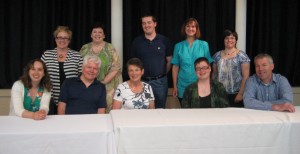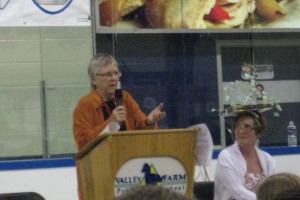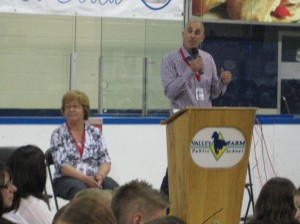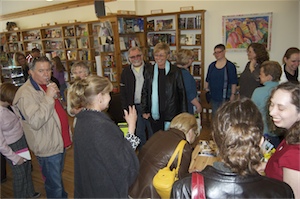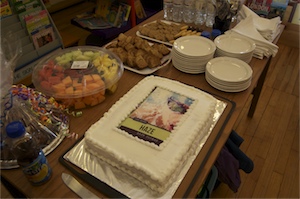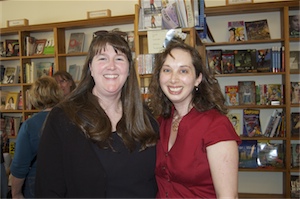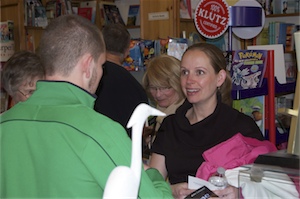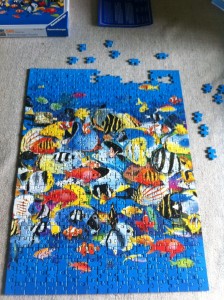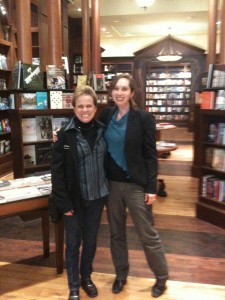Aside: Book launch is this Sunday! Exciting! 🙂 I hope some of you will be able to make it. There will be yummy banana bread.
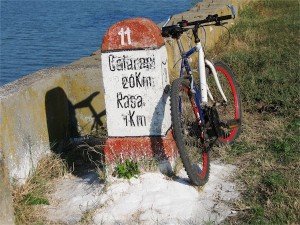 I passed what feels like a major milestone this past weekend — I finished my current draft of Tyler’s Intergalactic Spy School. The story was born three years ago, at the Muskoka Novel Marathon. That original story has changed a lot, but the heart of it is still the same. Anyhow, poor Tyler has been wandering around, ending-less, for about two years now while I tried to sort through all the feedback and story possibilities and tried on various beginnings to see what fit.
I passed what feels like a major milestone this past weekend — I finished my current draft of Tyler’s Intergalactic Spy School. The story was born three years ago, at the Muskoka Novel Marathon. That original story has changed a lot, but the heart of it is still the same. Anyhow, poor Tyler has been wandering around, ending-less, for about two years now while I tried to sort through all the feedback and story possibilities and tried on various beginnings to see what fit.
Enough was enough. I was going to get to the end. Even if it wasn’t perfect, it would be something to work with. It would be a complete manuscript again, not bits and pieces and maybe-nots.
My friend Jocelyne Stone and I headed up to my parents’ cottage for a long weekend of heads-down writing. It’s obvious that Jocelyne’s a true writer, because when I mentioned that there would be no running water and that the cottage can be a bit of an unknown at this time of year (some years mousies move in over the winter, some years they don’t), she didn’t even blink. Time away from life? Time to just write? She was in. The mice were welcome to keep us company, so long as they didn’t mind the lack of showers on our part, and so long as they didn’t interrupt.
We stocked up on some basic groceries (beans-on-toast, obligatory veggies, lots of chocolate) and reached the cottage around dinner time Friday. The good news? No sign of mice in the cottage. The bad? A dead mouse in the garage, inside the only bucket I could find that was large enough to use to carry the water for flushing the toilet.
The mouse was quite dead. Indisputably dead. And there had been water or oil or something nasty in the bucket in the first place. I’m no pathologist, but I suspect it contributed to the poor mouse’s demise.
I buried the mouse, put a rock over the site, and cleaned the bucket. Believe me, you don’t want the details.
In the meantime, lovely Jocelyne had been moving us in and unpacking the foodstuffs. I brought water from the lake and scrubbed my hands raw. We plugged in the fridge, started some water to boil, and got organized. And then, while there was still some light in the sky, I went to check the outhouse.
The first trip to the outhouse is always the source of some trepidation. As with the cottage, you never know what has moved in over the winter. For me, the worst-case scenario would probably be a snake. We were spared that, but there were a couple of Godzilla-sized dock spiders in the… you know. The business part of the outhouse.
Now, there is spider spray in the outhouse for just such occasions, but I couldn’t bring myself to inflict chemical death on them. Especially after what happened to poor mousie. I swept the outhouse, looked in on the spiders a couple of times just in case I had imagined them (no luck), and headed back to make my report. Crouching, Jocelyne and I decided, was the better part of valour.
Moving-in and housekeeping duties complete, we set down to work. And that was when I made the nastiest discovery of all… I had forgotten my power cord. My PowerBook has pretty decent battery life for a trip to the coffee shop, but four or five hours wasn’t going to do much for a weekend of intensive writing.
Oops.
Four-hour return trip home? Not realistic. Writing by hand? Intriguing, but probably not as productive as I wanted. Besides, I hadn’t brought all that much paper. Meeting husband and daughter halfway for a quick power cord hand-off? Not a good use of time or gas, either.
Fortunately, I have a techie-romantic for a husband. He likes to demonstrate his affection, on such occasions as Christmas and birthdays, with gifts that involve electronics. A back-up drive saved seemed like a weird Valentine’s Day present one year early in our marriage, but it saved my life a few weeks later when my hard drive died. Since then, I have never questioned his penchant for technology instead of roses. I’m not really a roses kind of girl, anyhow.
When it comes to things technological, I am spoiled rotten. This year’s Christmas gift was a bluetooth keyboard, to use with my iPad (you guessed it–anniversary present, a few years back). I nearly always carry them with me. And the iPad’s charger, unlike the computer’s power cord, was in my bag. Solution!
Sadly, my pet writing software, Scrivener, is not yet available for iPad. That meant I couldn’t edit old material, but in a way, this was the best thing that could have happened. I had to write new scenes, since I couldn’t get to the old ones. So Friday night I played with my index cards and plotted out an ending, and Saturday and Sunday I wrote. And wrote. By the end of the first day, of course, my index cards were wrong, and I had a crisis-of-scene on Sunday that required a long walk around the lake (Jocelyne was kind enough to come along and poke holes in my plot), but by Sunday night, I was typing “the end.”
It’s nothing close to done, of course, but now I know the shape of the story, and that’s a shift. It’s a different kind of work now; it’s sleeves-up editing, which will start with the big-picture stuff and then ripple through finer and finer until I get down to the scene and line level.
I’m looking forward to it.
Sometimes getting away is the best thing you can do. It means time with your head in the story, focused, nothing else going on. Jocelyne and I both finished drafts of the projects we were working on — that’s a great feeling. And if you can manage a packing screw-up that forces you to work on new material rather than old, that can be a perk, too. (Jocelyne, apparently, didn’t need to resort to this. She’s working at a more advanced level.)
And, of course, we went swimming in the icy April water. Here is a picture of the lake the morning we went in. I’m not including the pictures of us in our bathing suits, because it’s not that kind of blog. Also, by then my hands were shaking.
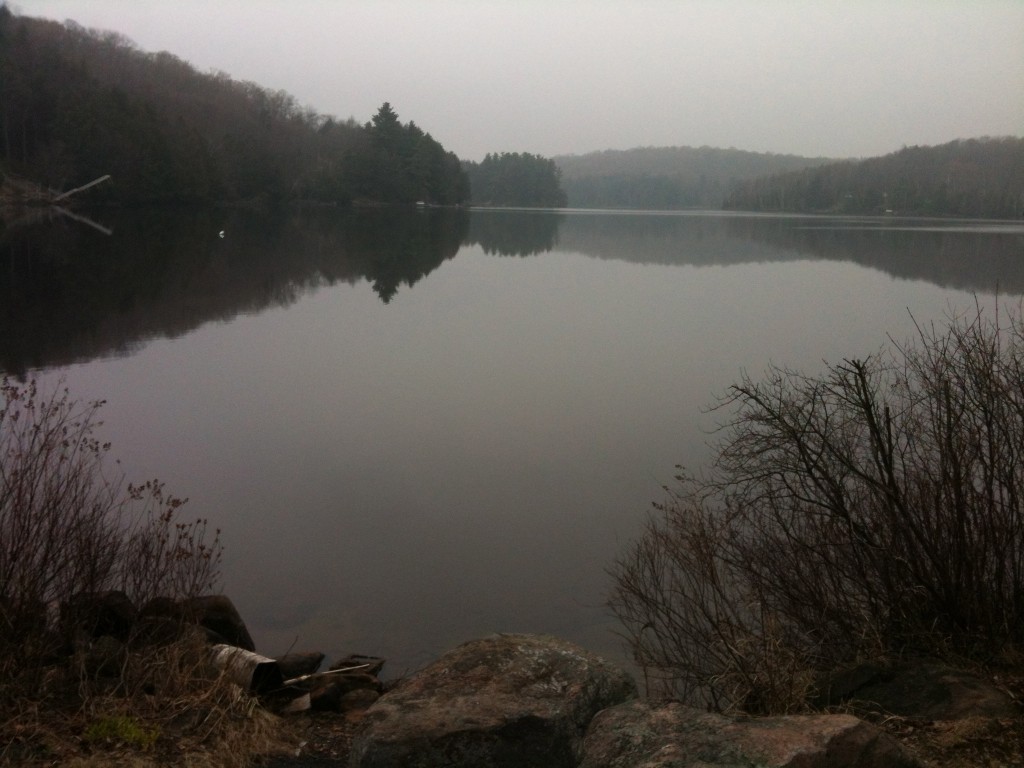
We are both going to apply to Peter Carver and Kathy Stinson’s seaside writing retreat this summer. I don’t know if we’ll get in, but we’re crossing our fingers. I’m hoping for Jocelyne more than for me, and for my friend Heather who’s also applying, because I’ve gone before, twice. It’s an incredible experience. Sometimes the best type of getting away to focus on your writing is when other people are doing the same thing, right along with you.
And besides, Peter and Kathy have running water.


